This article attempts to analyze effective growth paths on Telegram/TON from the perspective of recent developments in Telegram.
Written by: Deep Tide TechFlow
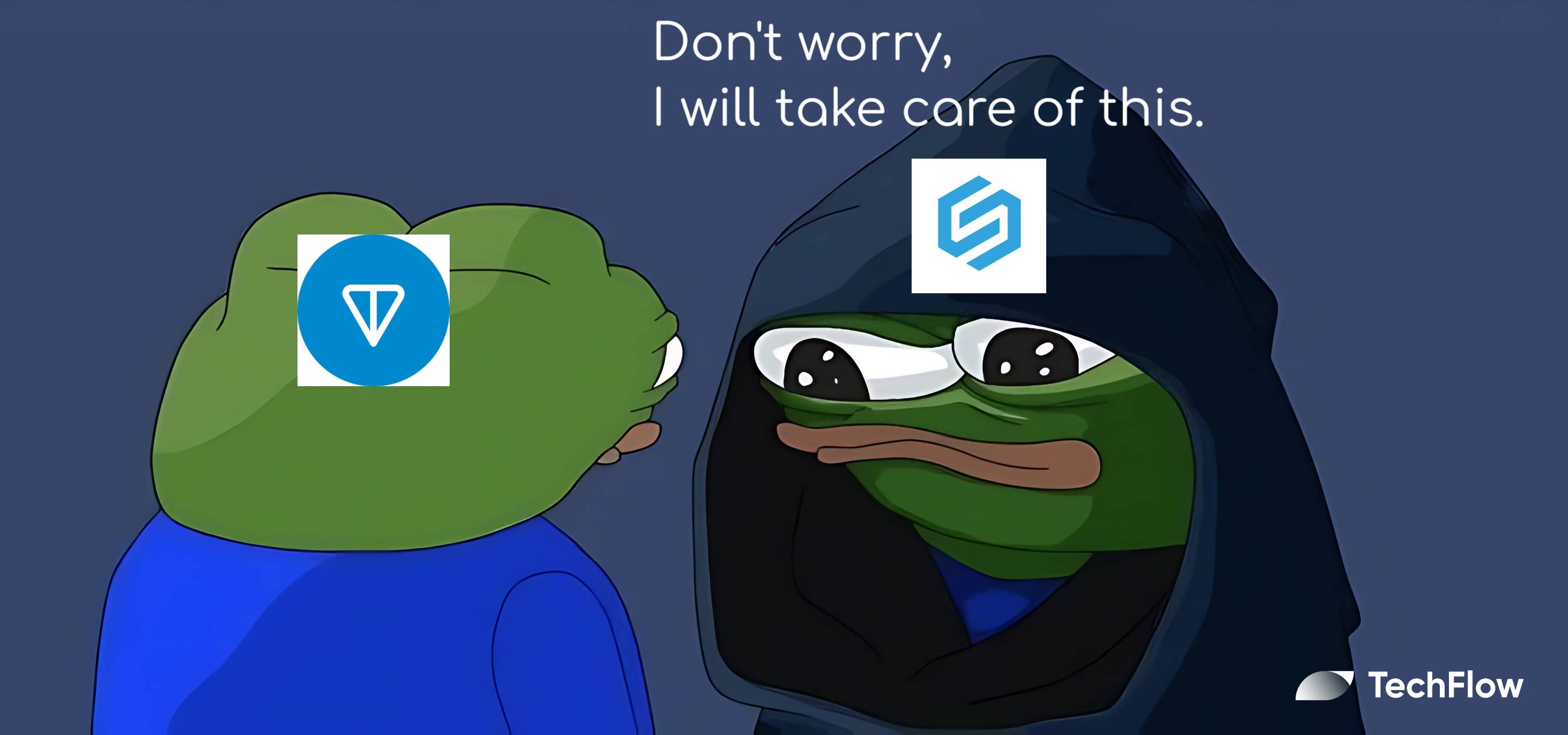
One of the hottest public chains this year, TON, seems to have lost some momentum recently.
With the backing of Telegram's billion-level user base, the enticing traffic has attracted countless individuals to build projects and engage in various activities.
However, after several ecological projects launched, people began to question the quality of Telegram traffic.
Poor user quality, too many bots and profit-seekers are the most common complaints we hear.
The end result has led to poor exchange effects between projects, or for new projects seeking growth, their advertising effectiveness has also been lacking.
So, is Telegram's traffic not genuine? Are there better growth methods? Is it worth investing in Telegram/TON?
This article attempts to analyze effective growth paths on Telegram/TON from the perspective of recent developments in Telegram.
Telegram + Wallet, the Pandora's box of commercial potential has been opened
Telegram's dilemma: many users, but poor user quality?
First, it is undeniable that Telegram's traffic is substantial. According to current data, by 2024, Telegram's global user count has exceeded 700 million, with 950 million monthly active users, making it the third-largest traffic entry point after Google and Facebook.
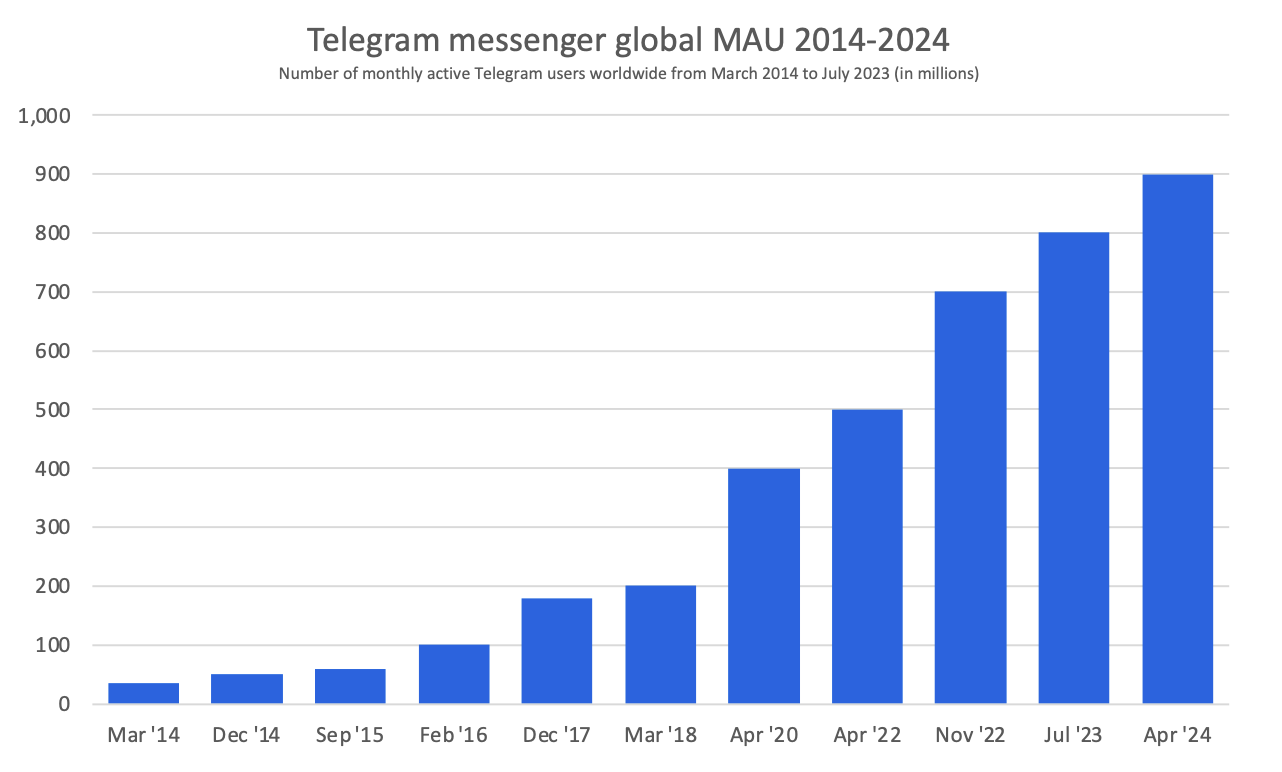
*Charts From Statista
However, from a commercialization perspective, Telegram is just getting started.
First, Telegram has launched a paid subscription service to provide users with more advanced features and customization options.
Additionally, they are monetizing through advertising on channels and groups, which can be targeted based on user interests and behaviors, representing Telegram's current main business model.
However, this commercialization process also faces some challenges, such as:
Due to the diversity and anonymity of its user base, establishing accurate user profiles is difficult, complicating targeted advertising.
Telegram has always emphasized privacy and an ad-free experience, making it a significant challenge to commercialize without compromising user experience.**
Given these issues, both traffic owners (those with TG traffic, such as large group owners or applications with many users) and advertisers (those wanting to advertise on TG, such as project parties) may feel helpless in the face of such vast traffic.
The question then becomes, there is traffic here, but how to effectively utilize it is a problem that needs to be addressed.
Wallets and Mini Apps may gradually change this situation.
Wallets driving Mini App explosion, making Telegram's user profile clearer
First, we need to clarify two concepts: Telegram Wallet and Telegram Mini Apps.
Telegram Wallet: Telegram Wallet is a feature developed by Telegram, which was previously abandoned but later completed by the TON community. In September 2023, Telegram announced the integration of Telegram Wallet, supporting transactions in TON and other cryptocurrencies.
Telegram Mini Apps: Telegram Mini Apps were officially launched in April 2023. These applications allow developers to create and run web-based applications within Telegram.
Although Telegram Mini Apps were launched earlier, their usage and development have exploded following the launch of Telegram Wallet. While there is currently no official data to support this, the Wallet provides more convenient payment and transaction functions, which will attract more users to use Mini Apps for shopping, payments, and other activities.
For example, at the recent TOKEN 2049, the mini app launched by TON and TADA allows users to book rides directly through Telegram, currently showing over 2.8 million monthly active users.
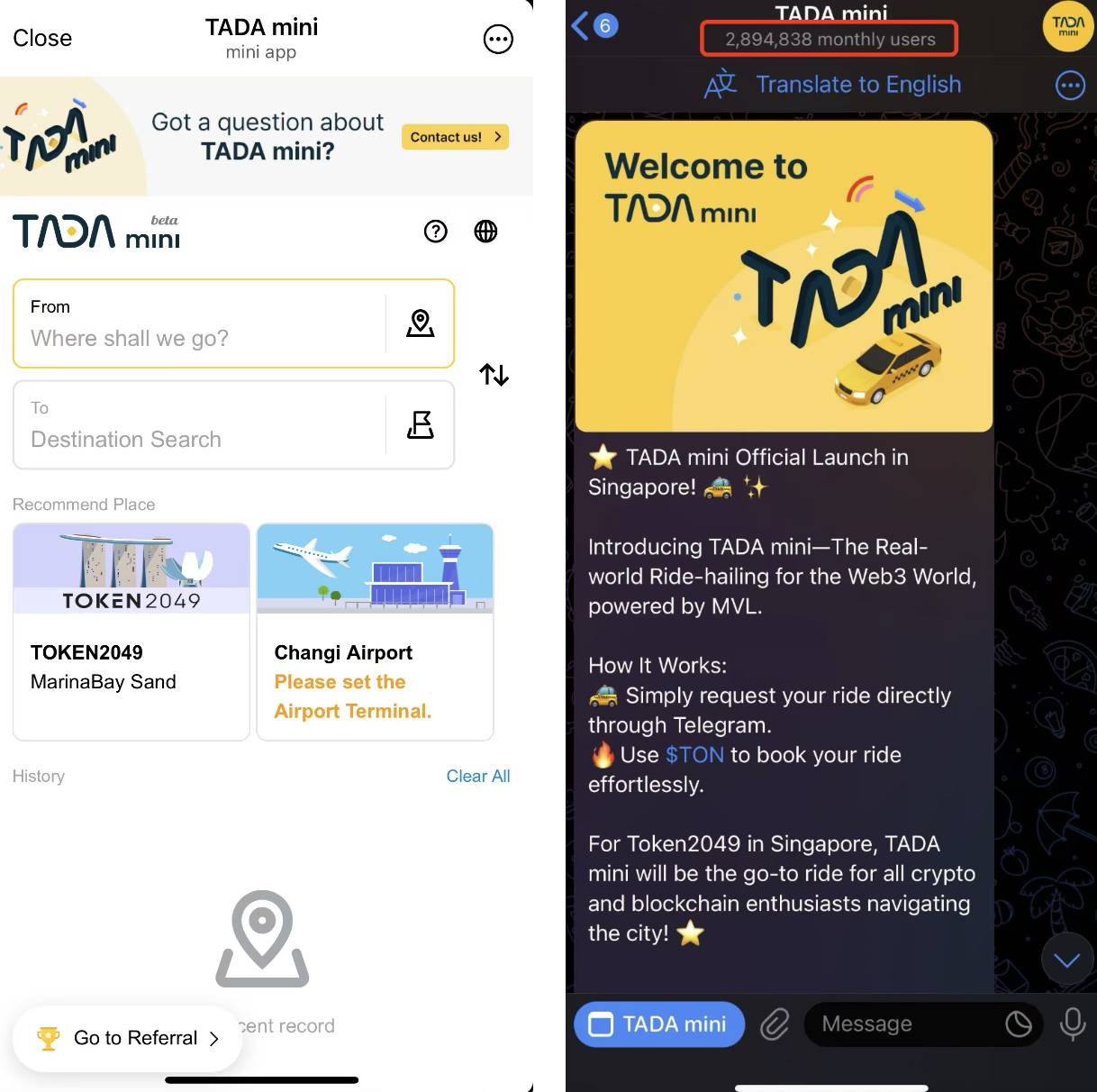
The number of Mini Apps is continuously increasing, and with the further popularization of Mini Apps, users can choose from a wider variety of applications, such as crypto games and ride-hailing apps. This makes Telegram's user profile more diverse and clearer.
Through this rich application ecosystem, Telegram will be able to better understand user needs and categorize users.
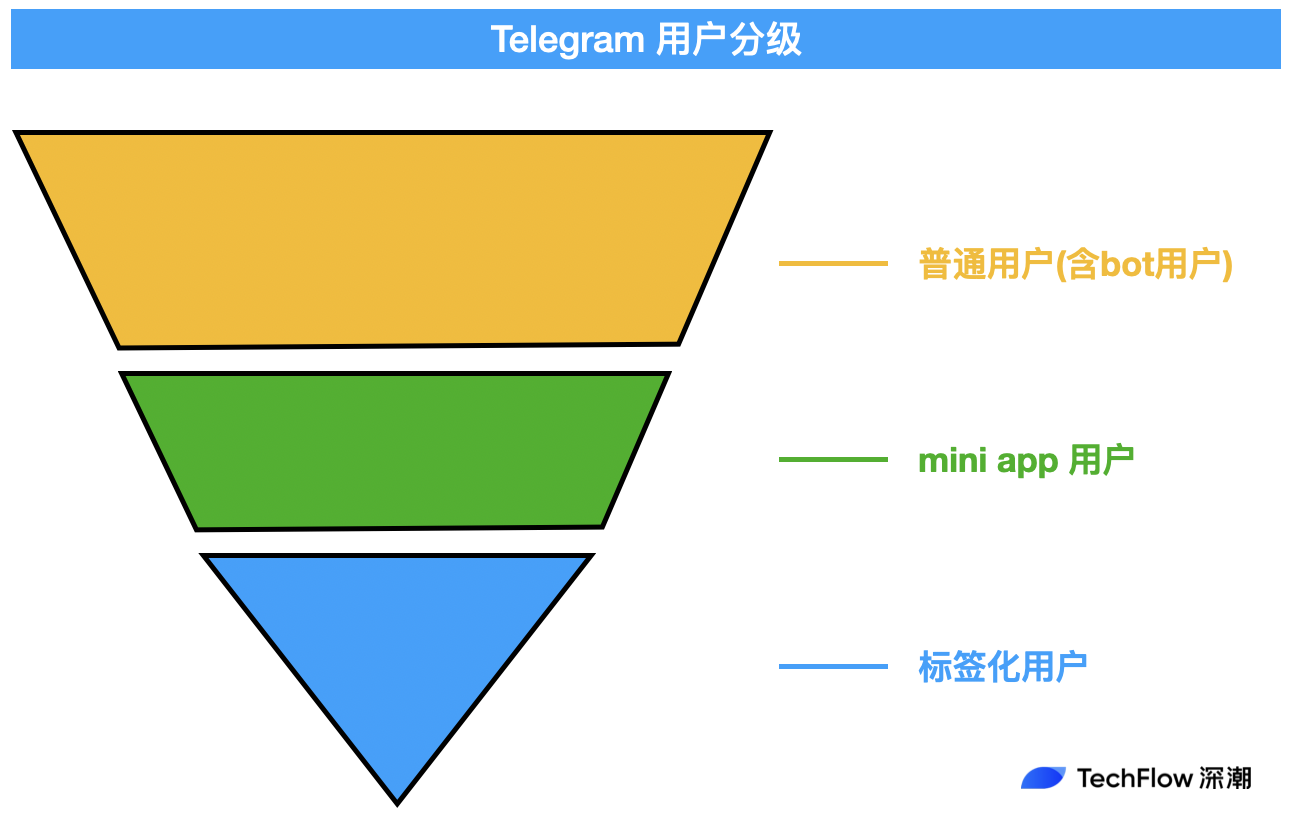
Once users can be categorized, Telegram's marketing potential is unlocked.
Telegram's own Google Ads/Guangdiantong
Earlier, we mentioned that Telegram's current main revenue sources are paid subscription services and group advertising services. Once user categorization becomes more concrete, we arrive at the familiar Web2 traffic advertising logic, similar to Google Ads and Tencent's Guangdiantong.
Google Ads and Tencent Guangdiantong are advertising platforms that conduct precise ad placements based on user data and behavior.
Google Ads provides targeted advertising services for advertisers by analyzing user search habits, browsing history, and geographical location.
Tencent Guangdiantong utilizes Tencent's vast user base, combining users' social behaviors, interests, and usage habits for precise ad placements.
Advertisers can set ads based on specific keywords and target audiences, thereby increasing ad conversion rates and return on investment for better marketing results.

As Telegram's user categorization becomes richer, Telegram will also generate more similar business development opportunities. Through precise user profiles, Telegram can provide advertisers with more efficient advertising solutions, attracting more brands and businesses to collaborate.
However, currently, Telegram has not officially launched an advertising platform similar to Google Ads or Guangdiantong.
At the same time, Telegram has a unique characteristic: since Telegram Wallet natively supports cryptocurrency payments, many mini apps can actually allow users to engage directly with cryptocurrencies and Web3 applications.
Therefore, we not only need to find a traditional third-party platform to support Telegram's advertising ecosystem construction, but also a platform that can integrate with Web3 to help advertisers effectively place ads on Telegram.
Web2 + Web3, making traditional traffic advertising more effective
Making Telegram ads effectively reach users like WeChat
First, we need to clearly define that advertising and growth are relatively broad terms, encompassing many types, such as creativity, operations, etc., all of which are related. The direction discussed in this article mainly concerns advertising placement on Telegram.
In the traditional advertising placement field, there are several main modules:
DSP (Demand-Side Platform): A system used by advertisers to purchase ad inventory/space. Advertisers can bid in real-time and choose the ad space that best matches their target audience.
SSP (Supply-Side Platform): Provides publishers with tools for managing ad inventory. Connects with multiple DSPs to enable real-time bidding for ad space.
Data Attribution: The process of tracking user behavior to evaluate ad effectiveness. By analyzing data, advertisers can understand the effectiveness of different ad channels and optimize their placement strategies.
Ad Networks: Ad networks are intermediaries that connect advertisers and publishers, aggregating ad inventory from multiple publishers for centralized purchasing. Ad networks typically offer a range of ad formats and placement options.
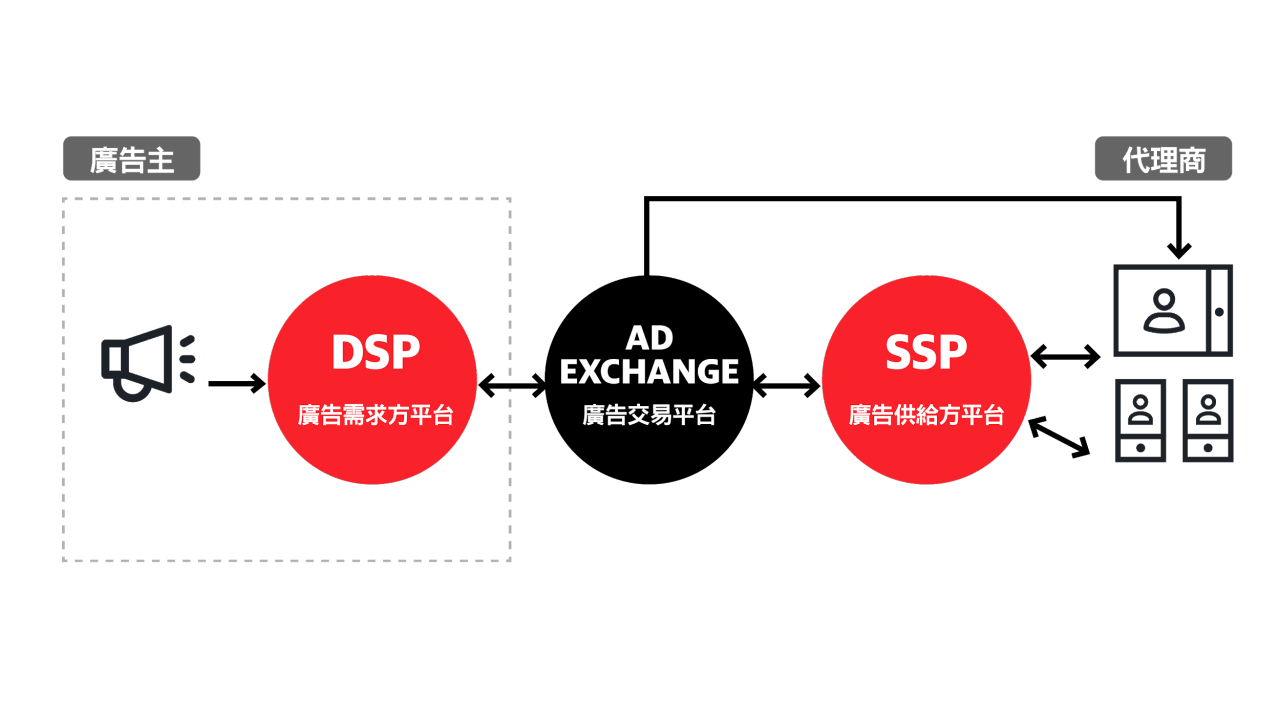
Image source: Internet
In the complex ecosystem of Web2 advertising placement, while the collaboration of various modules enhances the efficiency and precision of ad placements, traditional placements still face some significant issues.
Black box operations: During the bidding process, both advertisers and traffic owners have very low transparency regarding the entire process, making it difficult for them to understand the specifics of the bidding situation.
Fake traffic issues: Although data attribution tools can help analyze ad placement effectiveness and provide some insights, the existence of fake traffic remains a serious challenge.
In fact, there are already some projects in Web3 that resemble traditional advertising fields, such as Spindl and Addressable, which are attribution platforms built based on Web3 users' on-chain behavior; Coinzilla, which integrates a network of traffic owners for numerous crypto application ad placements.
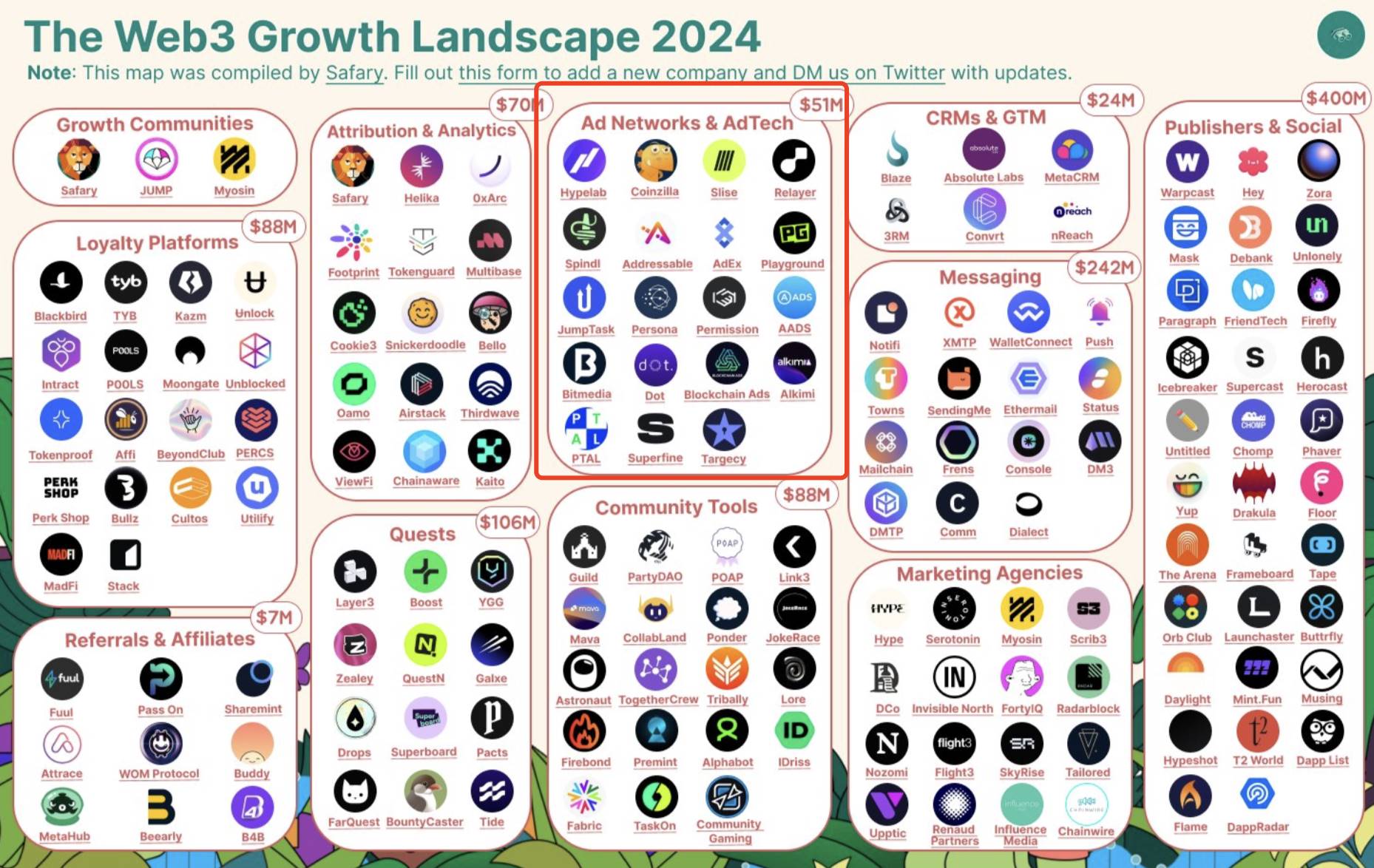
However, due to the unique attributes of Telegram, what is actually needed is to connect Web2 + Web3 dual-end user tagging to better "define Telegram users." Thus, we discovered OpenAD, the first decentralized platform that achieves the integration of Telegram traffic Web2 + Web3 data/tags.
OpenAD, the first decentralized platform that connects TG on-chain and off-chain tags
I first learned about this project from a friend, who mentioned that their advertising results through OpenAD were more than twice as effective as directly purchasing ads through TG.

How does OpenAD work?
Overall, OpenAD utilizes innovative methods to embed various types of ads (banner ads, interactive ads, etc.) into mini apps, allowing your ads to be effectively exposed in different scenarios.
In this process, OpenAD acts as an intermediary, connecting those who sell ads with those who buy ads.
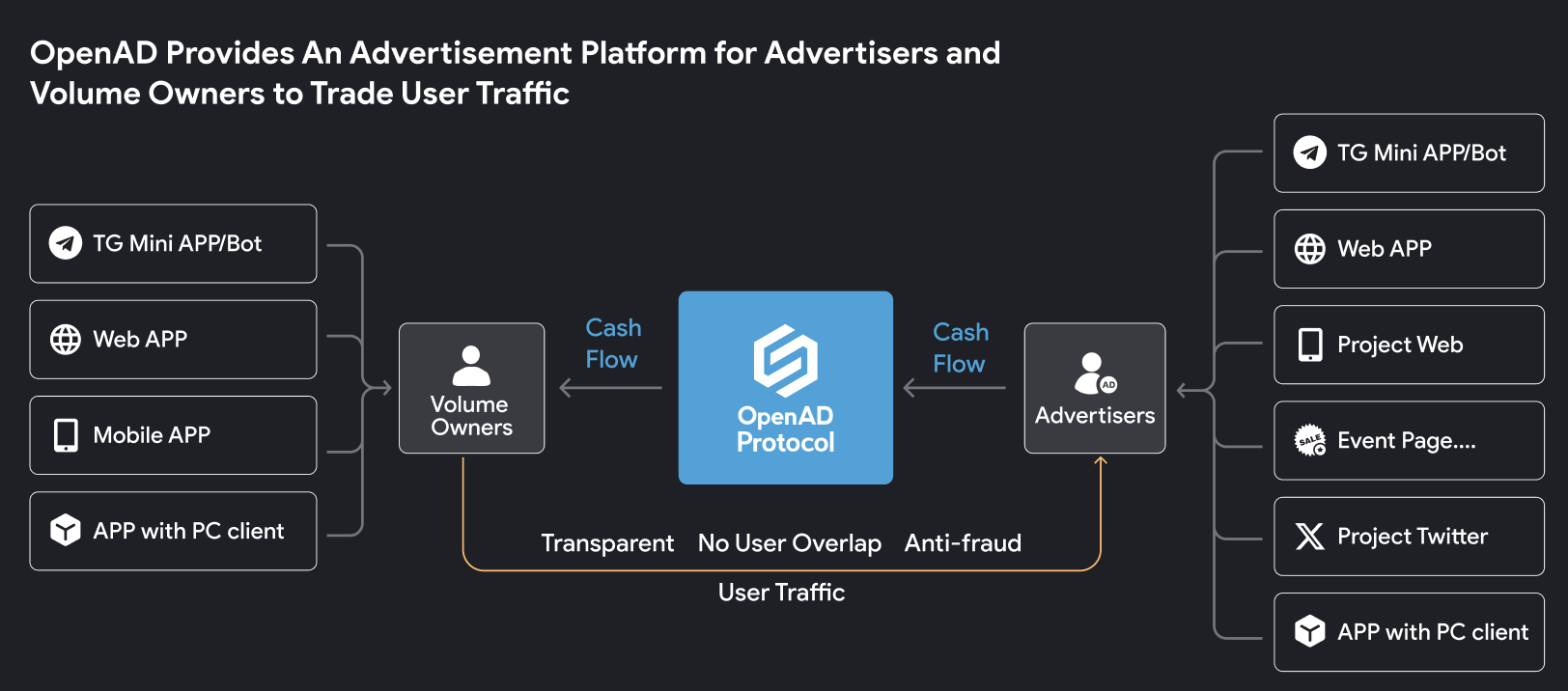
Image source: Offline event sharing
It may sound similar to traditional methods, but in reality, OpenAD has several key features:
1- Tagging mini app users
OpenAD uses data analysis and user behavior tracking to finely tag mini app users. For example, it collects information through user behavior data in mini apps (such as browsing history, click rates, and usage duration) to analyze users' interests, preferences, and behavior patterns, ultimately constructing detailed user profiles/tags.
2- Combining Web3 for more transparency and fraud prevention
OpenAD's advertising placements do not set incentive mechanisms, avoiding profit-seeking users and ensuring that ad placements and triggers are based on real user activities. Additionally, the design of the advertising system increases the difficulty and cost of bot users, automated operations, and witch attacks. Furthermore, by integrating Web3, user activities in OpenAD ads are periodically recorded and stored on-chain through smart contracts, allowing advertisers and publishers to transparently trace ad data.
3- Forming an efficient traffic network with no user overlap
OpenAD establishes partnerships with multiple industry traffic owners (such as several high-traffic project parties) to form an efficient traffic network. At the same time, traffic owners can integrate their traffic resources into the OpenAD network, creating a traffic exchange alliance that transforms the previous 1v1 business development relationship into a 1vN relationship, achieving better results.
This will bring new changes to both ends of important traffic owners and advertisers in advertising placements.
For example, for advertisers, previously purchasing ads made it difficult to identify user quality, had low selectivity, and could encounter fake traffic; for traffic owners, monetizing their traffic was challenging due to difficulty in finding clients, and they worried that hard-embedded ads would affect existing user experiences.
With platforms like OpenAD integrated, the entire ecosystem experience will be completely transformed.
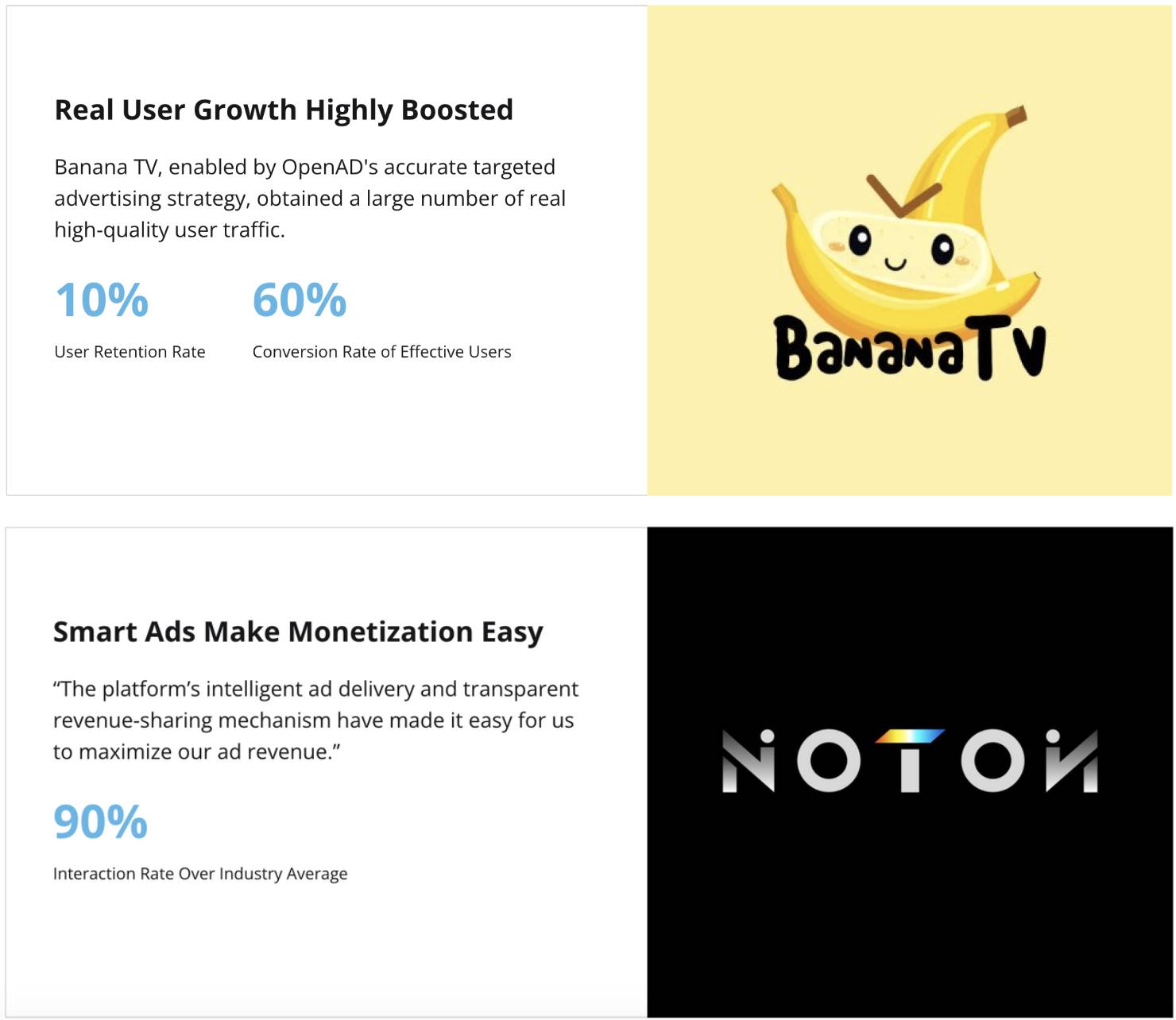
From the official website, we can see that, for example, as an advertiser, BananaTV achieved an overall user interaction rate of 60% and a retention rate of 10% based on OpenAD's high-quality user placements; while as a traffic owner, NOTON can obtain higher revenue by selling its traffic slots.
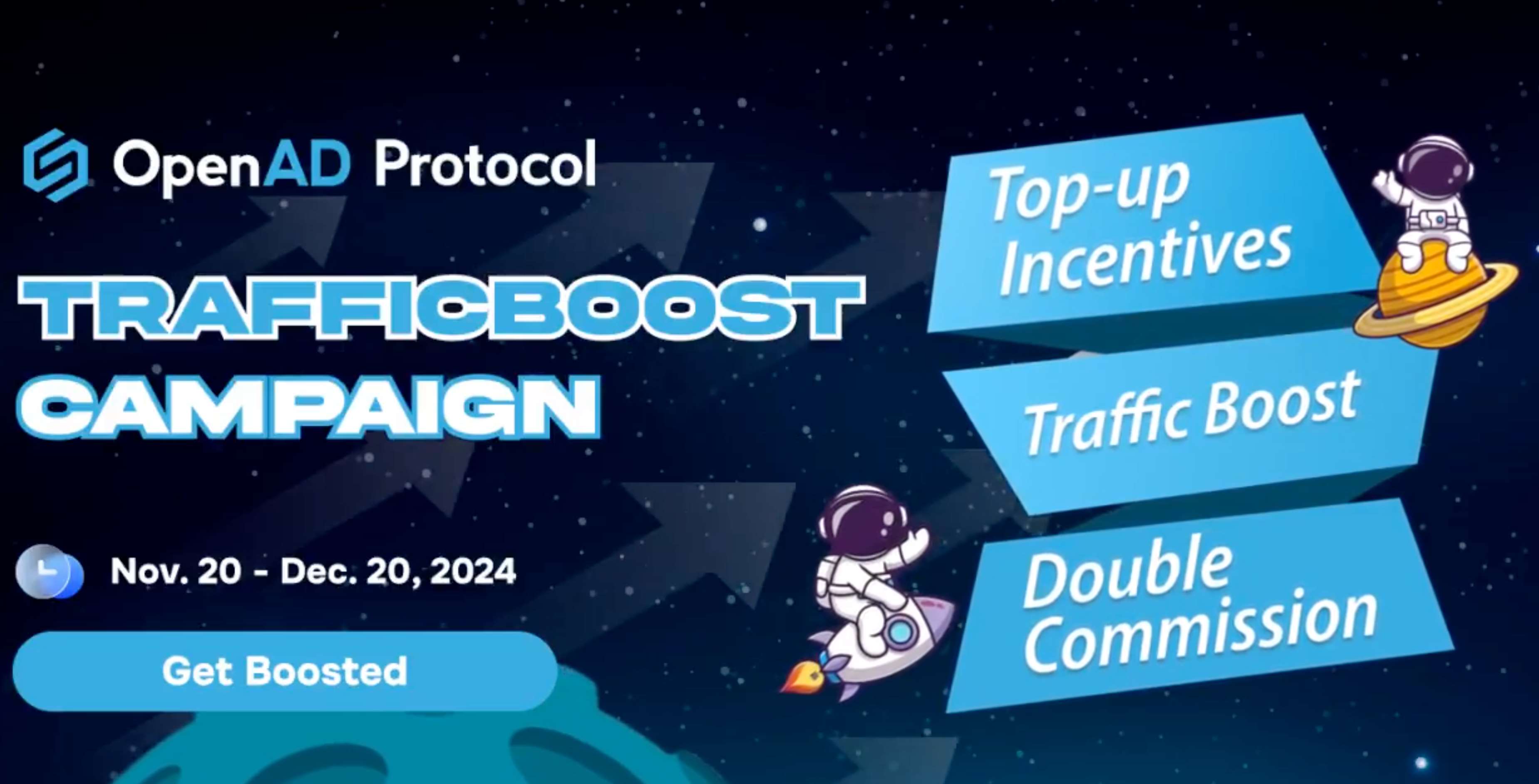
Currently, OpenAD is also launching a month-long traffic incentive campaign. For details, please refer to the official link: https://x.com/OpenAD_Protocol/status/1859126324436041758
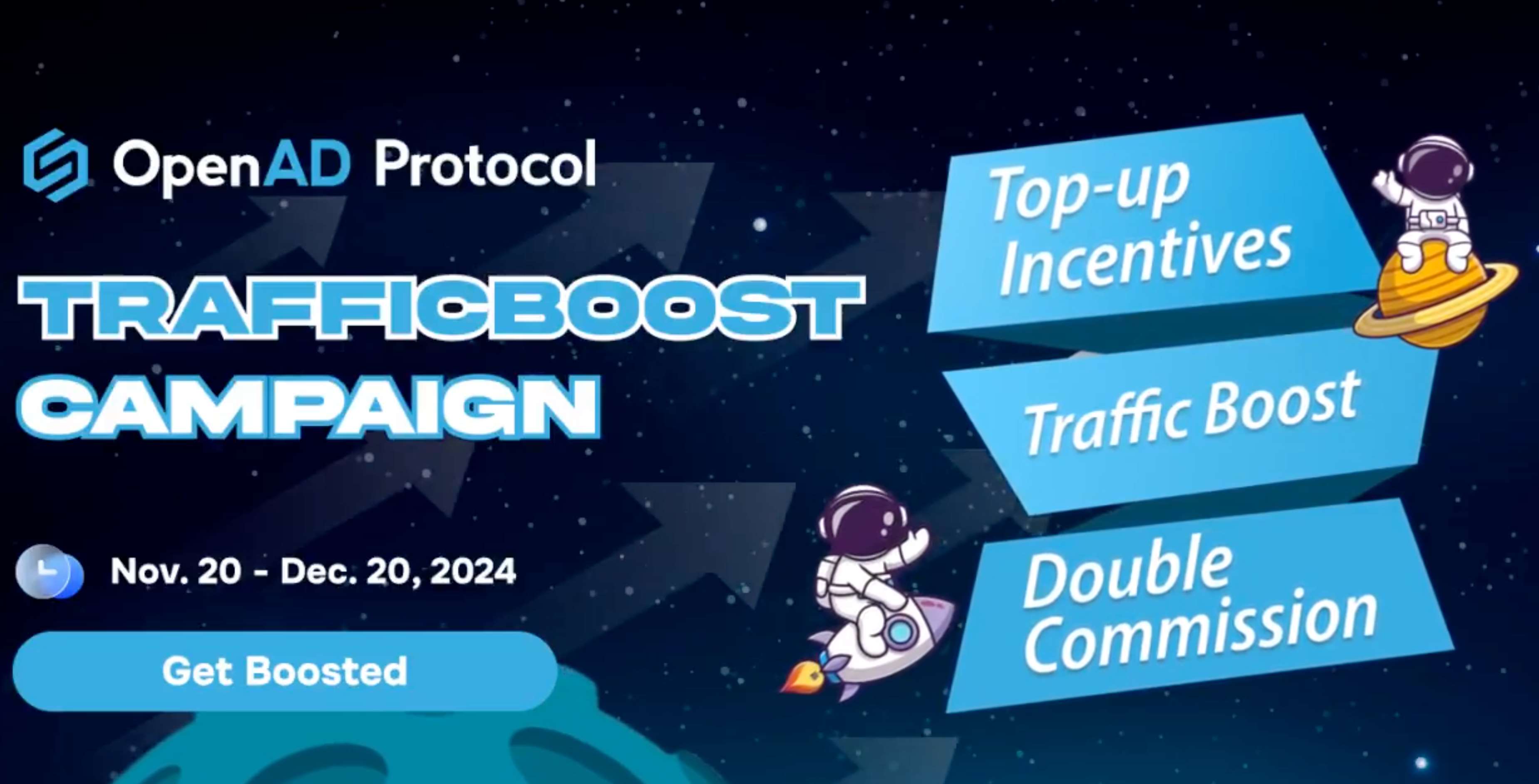
Mutually beneficial with Web3, the Telegram advertising ecosystem will become more prosperous
The evolution of the advertising ecosystem is closely linked to technological advancements. As a rapidly developing social platform, Telegram is also actively exploring the integration with Web3 technologies, which will undoubtedly promote the prosperous development of its advertising ecosystem.
Compared to other platforms, Telegram has unique characteristics, but this does not mean that Telegram will be isolated from other ecosystems.
Just like the previous Web3 growth-related projects, OpenAD, as an emerging advertising platform, can not only be limited to Telegram's traffic in the future but can also integrate data from other platforms. This cross-platform integration allows advertisers to conduct precise placements across a broader user base. Through projects like OpenAD, Telegram can also complement other social media and applications, gaining a more comprehensive understanding of user interests and behaviors, thereby building a rich advertising ecosystem infrastructure.
By integrating with Web3, Telegram can provide users with richer application scenarios and interactive experiences. Users can see ads related to their interests while using mini apps, further enhancing the effectiveness and enjoyment of the ads.
The multi-faceted collaboration of Telegram + Mini App + Web3 anticipates a more prosperous future for the Telegram advertising ecosystem.
免责声明:本文章仅代表作者个人观点,不代表本平台的立场和观点。本文章仅供信息分享,不构成对任何人的任何投资建议。用户与作者之间的任何争议,与本平台无关。如网页中刊载的文章或图片涉及侵权,请提供相关的权利证明和身份证明发送邮件到support@aicoin.com,本平台相关工作人员将会进行核查。




